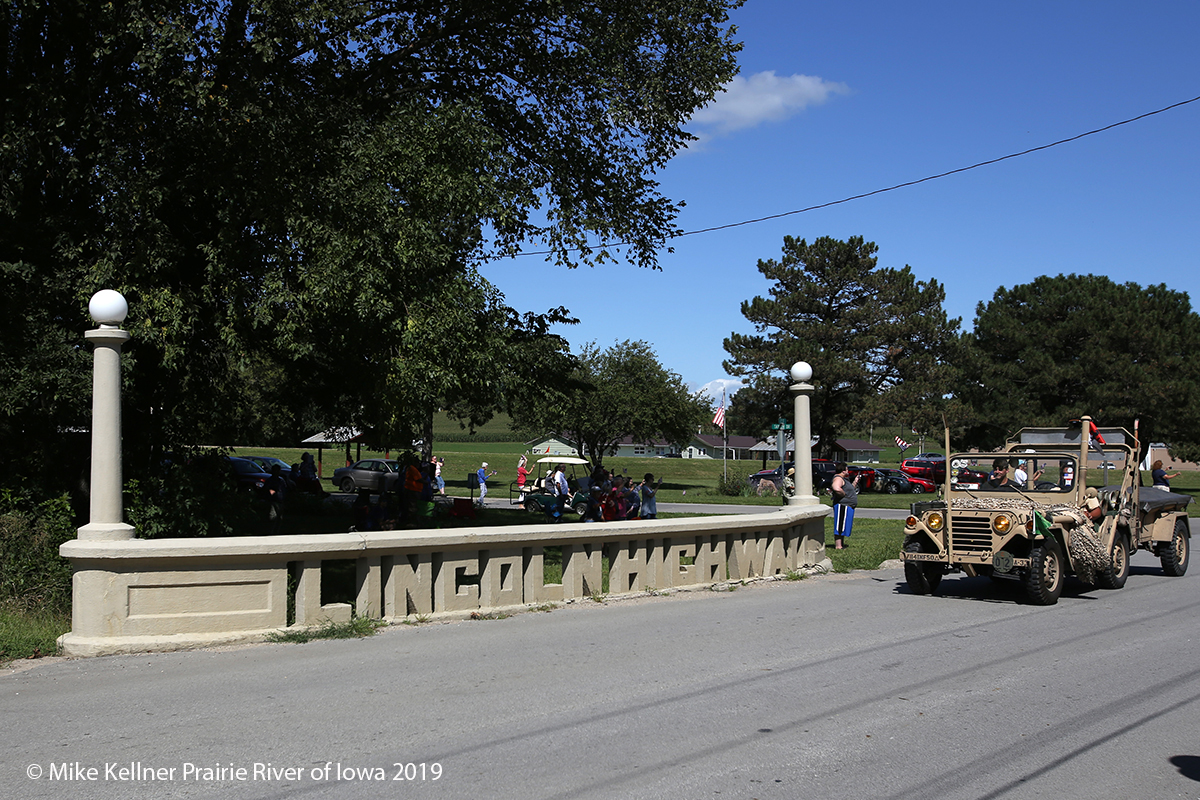One of the most visually impressive historic bridges along the Lincoln Highway in Iowa was the Lyons-Fulton Bridge, which opened in 1891 on July 4th of that year to much fanfare. Crossing the Mighty Mississippi before the bridge required time and access to a ferry boat, a calculus definitively changed once the bridge was constructed between Fulton, Illinois, and Lyons, Iowa. Not only did the Lyons-Fulton affect the ease of travel, it was a feat of engineering, and an aesthetically captivating one at that. But don’t make plans to see and admire it the next time you cross the Mississippi. It was replaced in 1975 by the Mark Morris Memorial Bridge. While deterioration of the bridge undoubtedly demanded its replacement, there are a number of existing historic bridges along the Lincoln that need to be kept up to avoid being lost.
Sidebar: Dedicated Lyons and Fulton Bridge High Bridge is a Reality from The Clinton Daily Herald; Sunday, July 6, 1891, P. 7
Arguably the most iconic bridge along the entire Lincoln Highway — which stretches from Times Square in New York City to the Golden Gate Park in San Francisco — is right here in Iowa. The Bridge over Mud Creek in Tama, built in 1915, is known for its distinctive design with railings that spell “Lincoln Highway” and lamp posts gracing each of its four corners. It’s a working bridge along a truck route with a packing plant and paper mill nearby. Needed repairs have been postponed by administrative delays, and now the City of Tama is considering whether to repair the bridge or move it to a nearby park and replace it with a culvert.
The discussion will continue at the next Tama City Council meeting on March 21, and many people who are interested in preserving the bridge will be in attendance to voice their opinions. If you are unable to attend, you can express a note of support by calling or emailing the mayor and city council members found here: https://www.tamacityia.gov/mayor-city-council.
One less well-known section of the old Lincoln Highway is in Clinton County, where a trio of bridges on the Wapsipinicon River near Calamus and Wheatland have deteriorated to the extent they needed to be closed. For byway travelers who want to know what it would have been like to travel the Lincoln Highway in 1920, this is a good place to visit. Because the bridges are closed, viewing the bridges will require some walking, but it’s a beautiful rural landscape. You might even see some of the original Portland cement road. A 2005 analysis done by Iowa State University’s Department of Landscape Architecture ranked this section highest in the state for driving experience, road design, and landscape integrity.
Prairie Rivers of Iowa, along with the Lincoln Highway Association and local preservationists are looking at options to preserve the area, and maybe turn it into a park for future visitors. Bob Ausberger, one of the founders of the modern national Lincoln Highway Association, stated, “The Wapsipinicon wetland is one of the top 10 visitor destinations along the Lincoln Highway in Iowa. I’m concerned that without careful and comprehensive planning, the historic district will lose its importance as part of the national historic byway, as well as its ability to serve local interests.”
Interest in Iowa tourism is at a peak. Iowa’s Tourism office reports that travel to and in Iowa is up 14.8 % comparing 2022 with pre-pandemic numbers. At the same time, we see many challenges to historic properties for travelers to see. The historical resources remaining on the Lincoln Highway need to be kept in good condition if we are going to have them continue as signposts of the past, and bridges are some of the most endangered among them.


